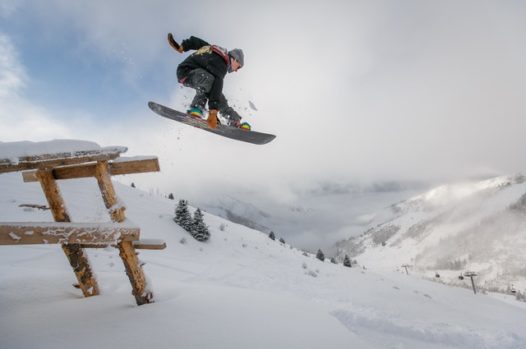Winter Olympics: how athletes adapt to competing in the bitter cold
Steve Faulkner, Nottingham Trent University and Katy Griggs, Oxford Brookes University
In the days before the Winter Olympics began, athletes reported that the weather in PyeongChang, South Korea was so cold that some ski equipment had warped. There are suggestions the games could be some of the coldest on record.
The Winter Olympics represent the pinnacle of four years of intensive training and competition for the world’s best winter sports athletes. These athletes will have spent thousands of hours planning, training and finetuning their performances in preparation for their time on the Olympic stage.
The one thing they cannot control is the weather. But they can prepare to adapt to the cold competition environment and employ smart clothing, enhanced by technology, to maximise their chances of winning a medal.
What the cold does to our bodies
Researchers are divided about whether exercise in the cold has a positive or negative impact on sporting performance.
Exposure to the cold causes an initial reduction in skin temperature followed by a drop in core body temperature. In order to defend against a damaging decline in body temperature and the onset of hypothermia, the body reduces blood flow to the skin and generates its own heat through shivering. Redistribution of blood flow is one of the primary defence mechanisms in the face of cold exposure. However, in the extremities, this mechanism causes a loss of dexterity in the fingers and toes. This has a detrimental effects in sports such as biathlon, where fine finger movement and control is vital during the shooting parts of the competition.
If exposure to the cold continues, a further drop in body temperature can occur which lowers muscle temperature. Muscles need to be warm in order to produce powerful contractions so this can have a negative impact on power events, such as in the bobsleigh and skeleton, where generating optimal muscle power is vital in powering the sled or skeleton down the start ramp. Increasing muscle temperature, through the use of a warm-up, is vital for improving muscle function, especially as for every 1°C increase in muscle temperature, there is a 2% increase in the power a muscle can produce.
Beating the cold
Unlike frequent exposure to the heat, adaptation to the cold is an incredibly slow process. There are three main steps to this process.
If you repeatedly expose yourself to a stimulus, such as the cold, your body does get used to it. The more used you get to the cold, the less your body reacts to it, so you may shiver less or have less of a change in blood flow. If you repeatedly took a cold bath or shower day on consecutive days, you would gradually get used to the cold temperatures. This process appears to involve a reduction in the shock response generated by the nervous system on exposure to the cold.
After prolonged exposure to the cold lasting many days or weeks, a person’s resting metabolic rate gradually increases as a result of the body generating more heat as a byproduct of converting food to energy.
Habituation to the cold can also increase the insulation of the body core and result in improved retention of body heat, as less blood flows to the skin and so less heat is lost to the surrounding environment. Another effect of longer-term adaptation is an increase in body fat, which helps to preserve body temperature. However, this response is often very slow, occurring over many generations of living in a cold environment.
Some of these responses to the cold will be unlikely to occur in the short term. But, following years of training in the cold mountains, athletes are likely to have experienced cold adaptation which will help boost their performance.
The role of technology
Clothes, particularly those enhanced by technology, can help athletes to maintain the optimal body temperature required to achieve peak performance. Research has found that increasing clothing insulation via electrical heating pads within a garment during a warm-up and immediately after a sprint has positive benefits on performance.
In explosive sports such as the skeleton and bobsleigh, where the speed achieved during the sprint start has a huge impact on the overall time of the sled, maintaining muscle temperature is very important. In a series of studies, my colleagues and I demonstrated that wearing these heating garments reduced the decline in muscle temperature and improved sprinting performance. In essence, the effect was similar to that used in Formula 1 when technicians wrap tyre warmers around a car’s wheels to increase the temperature and maximise grip on the track.
Similar technology is now being employed by a number of athletes during the Summer and Winter Olympic Games to maximise their performance potential. Research into this technology is often supported by national federations in order to help their athletes perform at their peak.
![]() So, as you watch the athletes competing in Pyeongchang, spare a thought for the immense effort that has got these athletes to the games. Not only their commitment to training, and technological development, but the ways in which their bodies have adapted to be able to perform near the edge of human capability in such an extreme environment.
So, as you watch the athletes competing in Pyeongchang, spare a thought for the immense effort that has got these athletes to the games. Not only their commitment to training, and technological development, but the ways in which their bodies have adapted to be able to perform near the edge of human capability in such an extreme environment.
Steve Faulkner, Senior lecturer, Nottingham Trent University and Katy Griggs, Lecturer in Sport and Exercise Science, Oxford Brookes University
This article was originally published on The Conversation. Read the original article.



